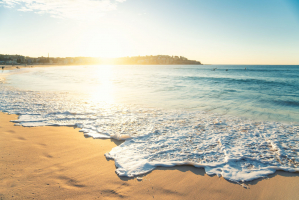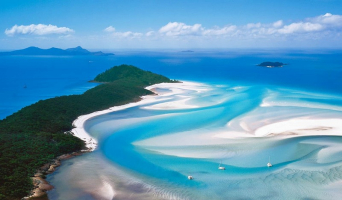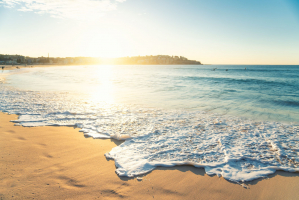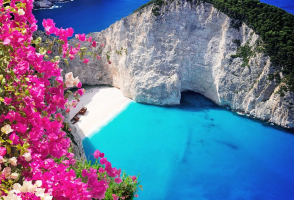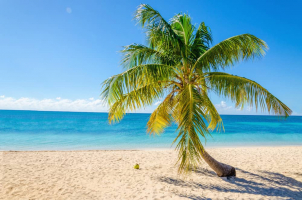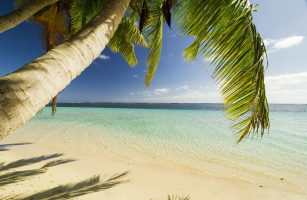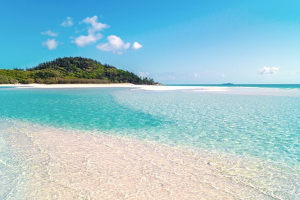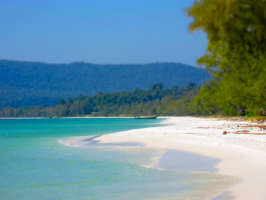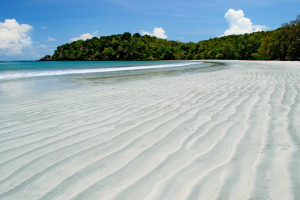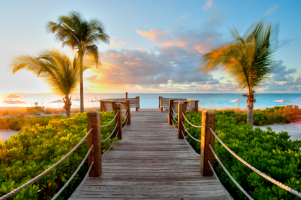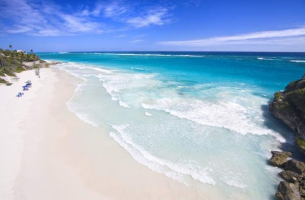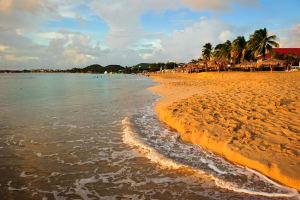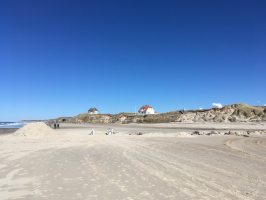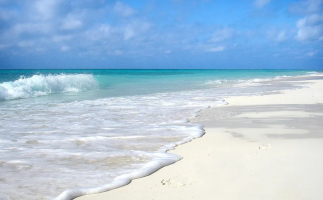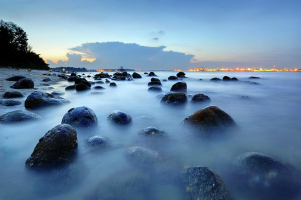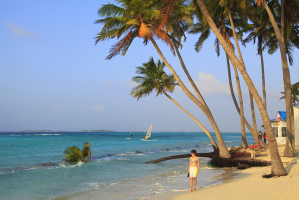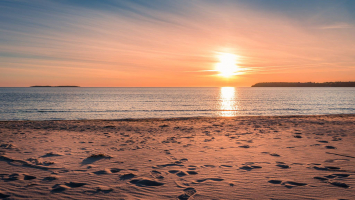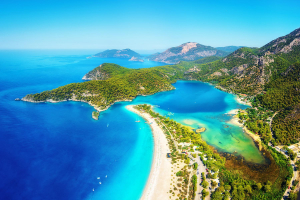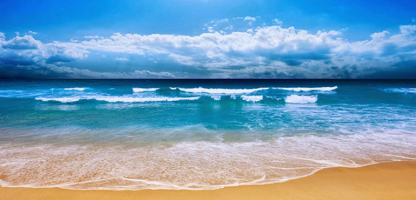Top 12 Most Beautiful Beaches in Hawaii
Almost all beaches in Hawaii are natural wonders, with peaceful secluded coves, towering cliffs rising out of the water, and pearl-white, pitch-black, and ... read more...emerald-green sand surrounding these islands. Here are the most beautiful beaches in Hawaii that we compiled for you. Take a look and plan your upcoming trip to the following beautiful beaches.
-
Hāpuna Beach is a huge sandy beach on Hawaii's Big Island. The Hapuna Beach Prince Hotel is very close to the beach. Hāpuna (literally, "spring" or "pool" in Hawaiian) is a popular destination for both locals and visitors.
This is one of a few white sand beaches on the Big Island's west coast. Kua Bay (Manini'owali Beach), Kaunaoa Bay (Mauna Kea Beach), and Samuel M. Spencer Beach Park are among the few others. In 1993 and 2021, Florida International University professor Stephen Leatherman, sometimes known as "Dr. Beach," declared it the Best Beach in America.
One of the nicest family beaches on the Big Island is Hāpuna Beach. The half-mile white-sand beach is nearly always sunny and features a continuous shore break that is wonderful fun for all ages to play in. The lack of rain (only 10 inches of rain per year), the availability of shade (the beach is bordered with trees and includes a shaded lunch pavilion), and the presence of a professional lifeguard on duty all year. Hāpuna also has regularly good swimming, bodyboarding, sunbathing, and snorkeling conditions. During the early part of the year, migratory whales can also be seen in the distance.
Location: Kohala, Hawaii
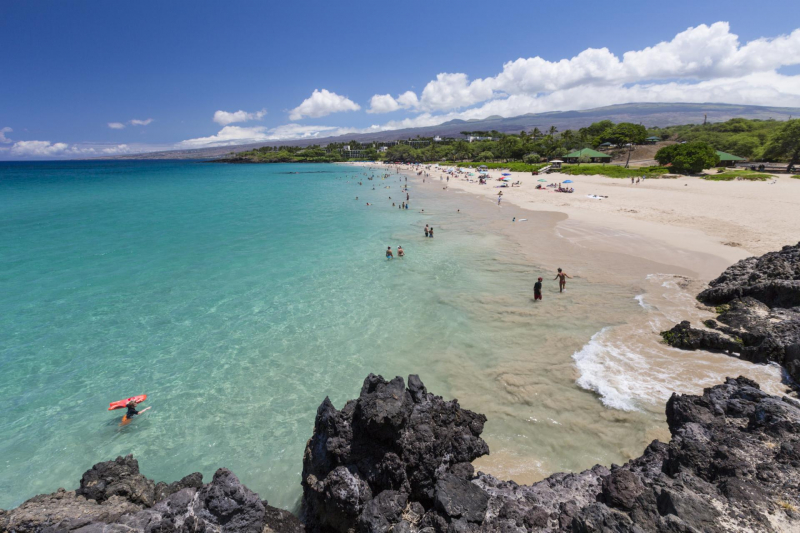
gohawaii.com 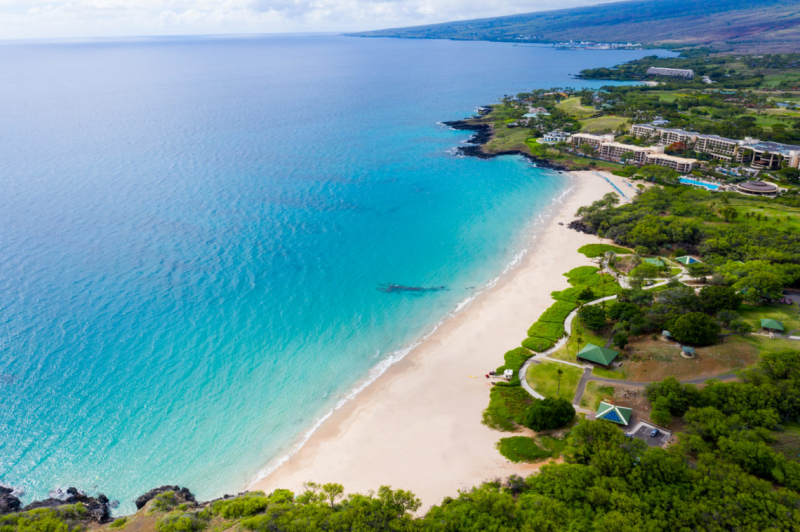
thatadventurelife.com -
Kauna'oa Beach features one of the few white sand beaches on the Kohala Coast, on the island of Hawaii's western coast. This beach, fringed by green palm trees and beautiful, golden sand, is regarded as one of the nicest on the island. On the Big Island, white-sand beaches like this one are uncommon. It's no surprise that Kauna'oa Bay is frequently listed among the top five beaches in the United States.
The beach is roughly half a mile (800 m) long and features two coral reefs and relatively calm waves. This cove's gently sloping beachfront is ideal for sunbathing, but more brave tourists can attempt snorkeling along the rocky, southern side of the beach, where sea turtles, parrotfish, butterflyfish, and other tropical fish can be seen. However, entering the ocean can be dangerous during times of high surf, which is prevalent throughout the winter months, due to a pounding beach break and strong rip currents.
Because Kauna'oa Beach faces the Mauna Kea Beach Hotel, it is also known as Mauna Kea Beach. Kauna'oa is one of the island's well-kept beaches. The majority of the amenities are in or near the hotel, and equipment rentals are available at various seaside stores.
Location: in the western side of the island of Hawaiʻi
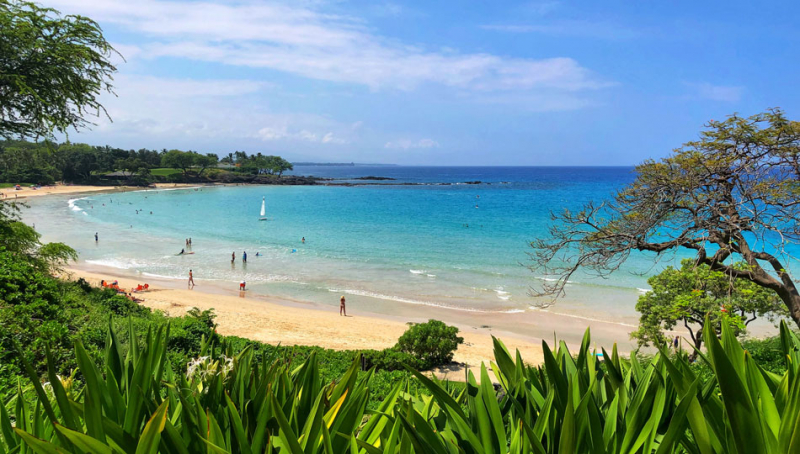
bigislandguide.com 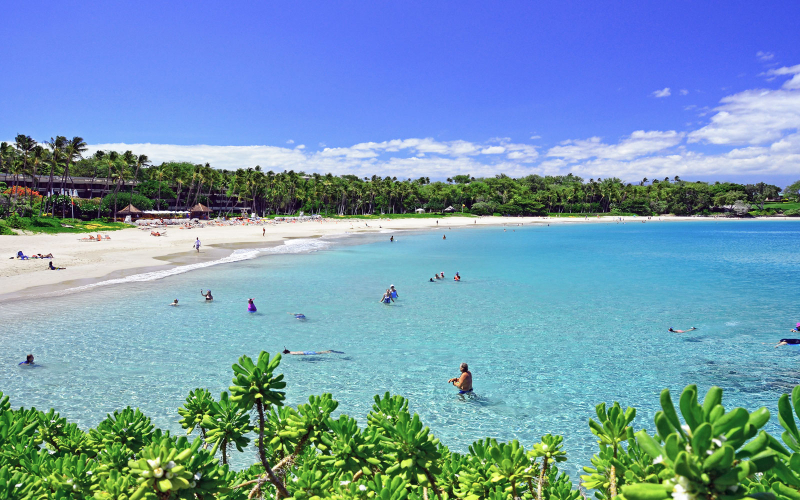
worldbeachguide.com -
Punaluʻu Beach (also known as Black Sand Beach) is a beach on Hawaii's Big Island between Pāhala and Nāʻālehu. The beach contains black sand made of basalt, which was formed by lava flowing into the water and exploding as it cools. This volcanic activity can be found in Hawai Volcanoes National Park.
Punaluʻu is a large and easily accessible black sand beach on Hawaii's Big Island. It's a terrific spot for a brief swim, snorkeling, a short coastal trek, camping with a permit, or stopping for a picnic. Swimming is possible at Punaluʻu, but be cautious while entering the water because there might be strong currents at times. If you have them, bring water shoes since the black sand on the beach heats up rapidly in the sun and there are numerous rocks in the sea that can be painful to step on. The modest boat ramp on the beach's left (facing the water) is the best place to enter the water.
Hawksbill and green turtles frequent Punaluʻu and can often be spotted basking on the dark sand. The hawksbill turtle, also known as the honu'ea, is the rarest sea turtle in the Pacific Ocean. According to researchers, there are less than 80 nesting hawksbill turtles on the Hawaiian islands, with 67 nesting on the island of Hawaii. The endangered green turtle, or honu (Chelonia mydas), feeds on marine vegetation in shallow seas such as Punaluu. The green turtle's favorite meal, red seaweed, thrives on the coral-encrusted rocks in the bay's shallow waters, and the turtles can be observed basking on the black sand beach despite the presence of beachgoers. Since 1982, researchers from the National Marine Fisheries Service, along with groups of students, have been studying the green turtle. Visitors must keep a distance of 20 feet (6.1 meters) from the turtles at all times.
Location: on the southeastern Kaʻū coast, Hawaii
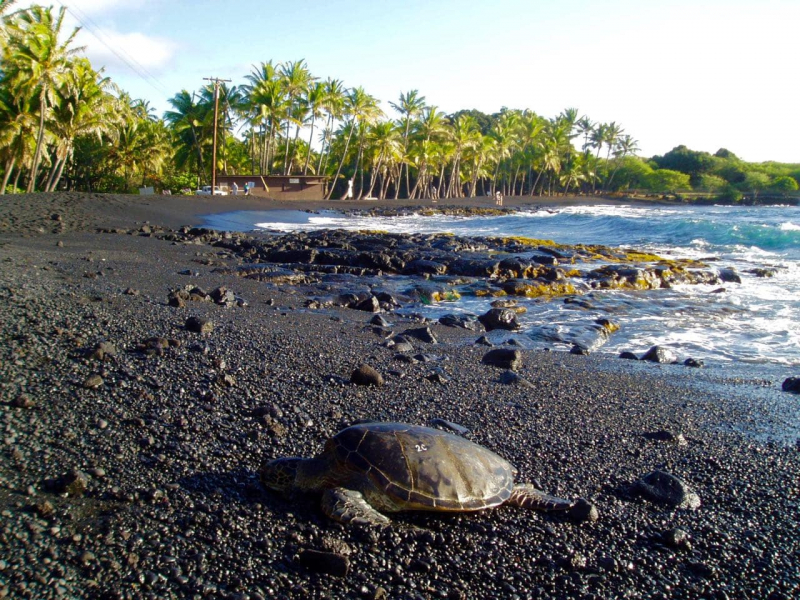
lovebigisland.com 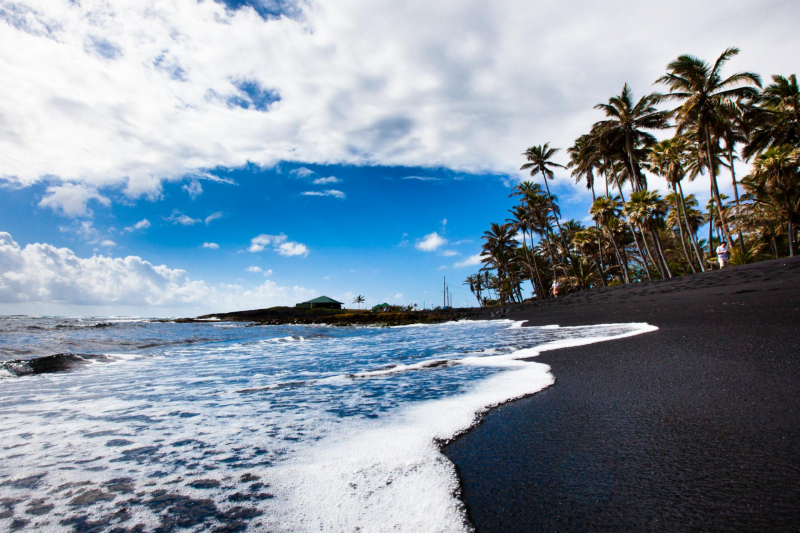
gohawaii.com -
Papakōlea Beach (also known as Green Sand Beach or Mahana Beach) is a green sand beach near South Point on the Hawaiian island of Oahu. It's one of only four green sand beaches in the world, along with Talofofo Beach on Guam, Punta Cormorant on Floreana Island in the Galapagos Islands, and Hornindalsvatnet in Norway. Its striking tint comes from olivine sand eroded from the surrounding volcanic cone.
As one of the most beautiful beaches in Hawaii, Papakōlea Beach is a geologic anomaly, one of only a few in the world. It derives its name from the Pacific golden plover. This journey takes you to a green sand beach in a bay cut into the side of Puʻu Mahana, a cinder cone that erupted approximately 50,000 years ago. The green sand is formed from olivine, a mineral found in Big Island lava that remains deposited on this beach because it is heavier than the other components of the lava.
Swimming is possible on the green sand beach, however, the surf is rather fierce along the infamous southern shore. There is no lifeguard on duty. There are no facilities near the trailhead or on the beach, so plan carefully. Early in the morning is the finest time to visit Papakolea Beach (before noon). If you want to avoid crowds, go on a weekday. The colder weather will make the hike more enjoyable, and staying away on the weekend will help you escape some of the throngs. This is especially important because the green sand beach has grown in popularity in recent years!
Location: near South Point, in the Kaʻū district of the island of Hawaiʻi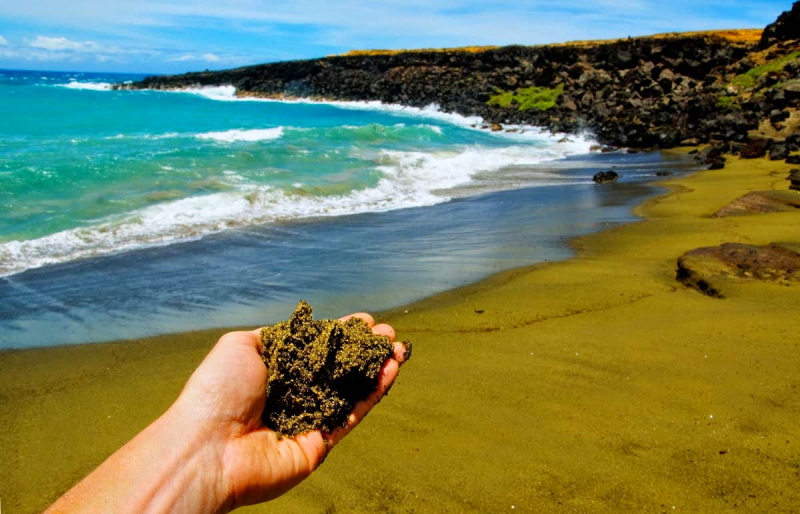
geologyin.com 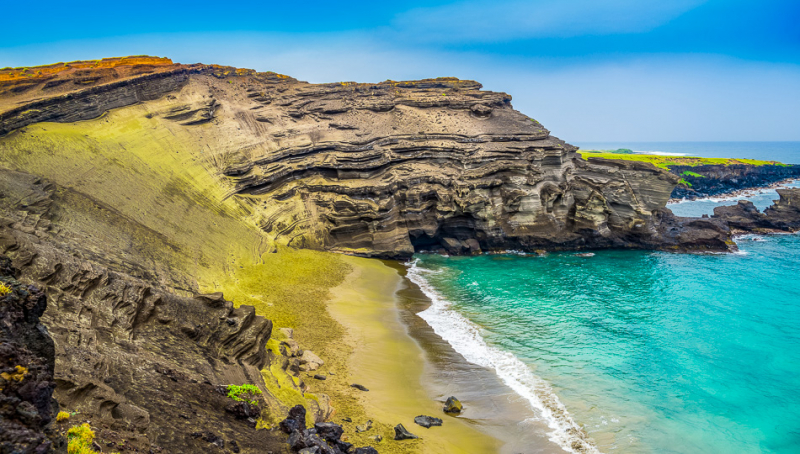
bigislandguide.com -
Kāʻanapali Beach, with three miles of white sand and crystal clear water, was once crowned America's Best Beach and is undoubtedly the island's most popular and cherished beach. After visiting, you'll understand why it was chosen as the site of the island's first master-planned resort development. The Royal Lahaina Resort opened on 27 acres of oceanfront property in 1962, and other renowned resorts have followed suit throughout the years.
Kāʻanapali was Hawaii's first planned resort and has served as a model for resorts all over the world. This well-known beach is surrounded by five hotels and six condominium villages. Kāʻanapali Beach is a beautiful stretch of shoreline with powder white sand, gentle waves, and spectacular views of the West Maui highlands on the island of Maui. You can engage in a variety of water activities or simply relax on the gorgeous beach, which has been dubbed one of the best in the world. Kaanapali Beach has seven hotel fronts and outdoor shops at Whalers Village, so you won't have to travel far for necessities.
The daily cliff diving ceremony off the beach's northernmost cliffs known as Puʻu Kekaʻa or Black Rock is one of Kāʻanapali Beach's most famous attractions. Every evening at dusk, a cliff diver lights the torches along the cliff before plunging off Black Rock in a reenactment of Maui's legendary King Kahekili's achievement.
Location: Maui County, Hawaii
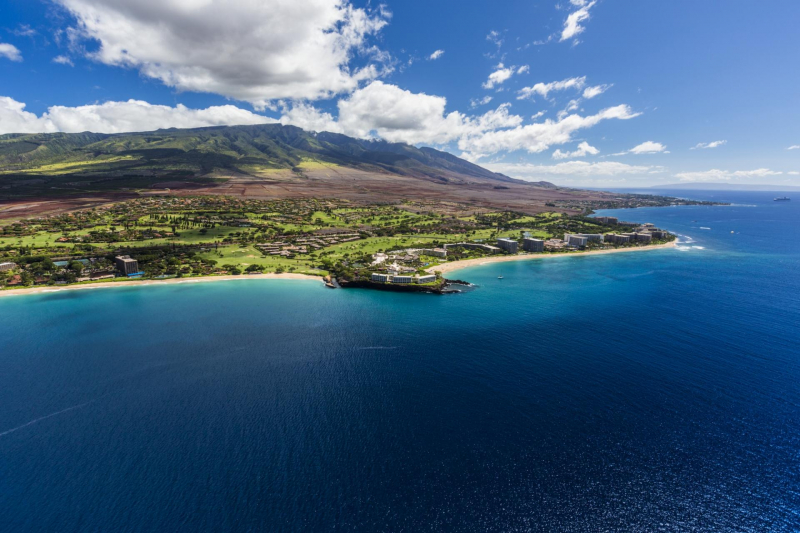
gohawaii.com 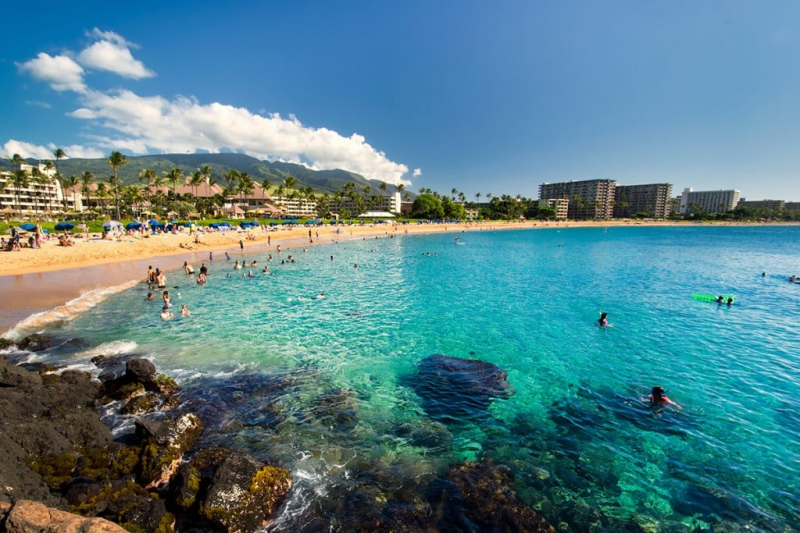
hawaiimagazine.com -
Mākena Beach State Park is one of Maui's most well-known beaches. It is one of Maui's largest unspoiled beaches, stretching approximately two-thirds of a mile long with white sands. Relax on the beach with nothing but nature in sight. Mākena, nestled between two black-lava outcroppings, gives refuge from the trade winds and spectacular views of Molokini and Kahoolawe. Big Beach and Little Beach are the two beaches in the vicinity. Big Beach is located south of Wailea and offers a more private option to the more popular beaches of Kāʻanapali and Lāhainā. Little Beach is a small cove with no facilities and no lifeguard on duty.
Big Beach, also known as "Oneloa Beach" and "Mākena Beach," is a popular site for both visitors and locals to sunbathe and bodyboard. Big Beach stretches for 1.5 miles (2.4 kilometers) and is more than 100 feet (30 meters) broad. Makena Beach is Maui's most unspoiled shoreline, and it has soft golden sand and turquoise and green sparkling water. One of the most gorgeous beaches in Hawaii, with magnificent sand, lava rocks, and incredible surf. Makena Beach is over two-thirds of a mile long and 100 feet broad, flanked by two black lava outcrops, and is perfect for long walks and swimming, but only when the surf is calm.
It's perfect for surfers and bodyboarders who don't mind getting punched every now and again. Strong currents and heavy waves frequently pound this beach, making it unsuitable for tiny children or weak swimmers. Sunsets from here are stunning since they face west, with views of Kaho'olawe Island and the Molokini Crater in the distance. Overall, a stunning quiet beach if you want to spend a day away from the throng and surrounded exclusively by nature.
Location: Maui, Hawaii
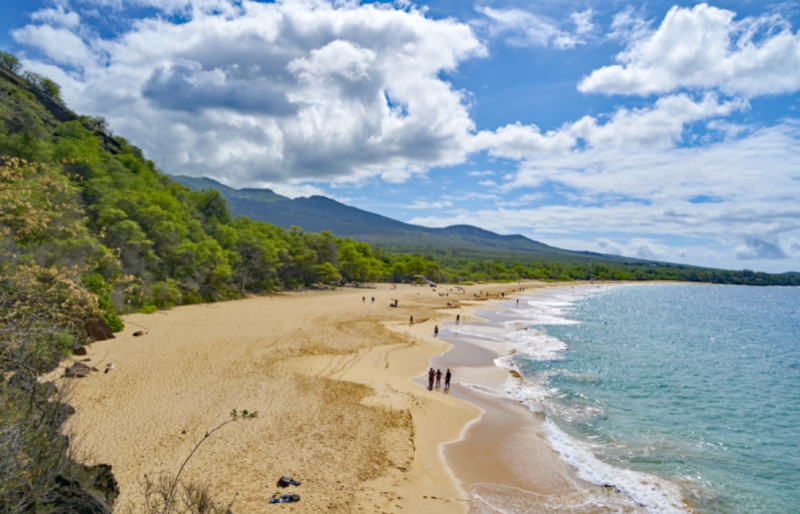
maui-hikes.com 
travel.usnews.com -
Polihua Beach, one of the most beautiful beaches in Hawaii, is the longest white sand beach on Lanai, stretching over 1.5 miles. Polihua, located on Lanai's northwestern tip, needs the use of a four-wheel drive vehicle to navigate the rocky, four-mile-long trail that goes here. Polihua, with its turbulent surf and high winds, is more of a picturesque beach than a participatory one. The winds can be so powerful that they form sand storms, so if you come here on a windy day, you'll almost certainly get sandblasted all over you. On calm days, this beach is ideal for sunbathing, picnics, and photographing.
Swimming and ocean activities are not advised owing to the erratic surf and strong currents. The nearshore ocean floor is steep and slopes precipitously to above depths. Polihua Beach is also entirely exposed to the open ocean. It lacks a protecting reef and rocks. Even on a calm day, the powerful alongshore current is always strong and will easily sweep you out to sea. Swimming is not safe here at any time of year, regardless of how calm the ocean appears.
Polihua Beach was previously one of Hawaii's most well-known green sea turtle breeding beaches. Although endangered green sea turtles are slowly making a comeback, they are no longer commonly spotted here. If you visit during the winter, you are significantly more likely to observe whales. They frequently travel close to the beach.
Start from the Garden of the Gods and make your way to Polihua Beach. Just a short trek from your parking location, you'll be rewarded with gigantic sand dunes expertly carved by the unrelenting ocean-driven winds. Despite the absence of ocean activities at Polihua Beach, many visitors enjoy its remoteness and the unusual and gorgeous scenery.
Location: Lanai, Hawaii
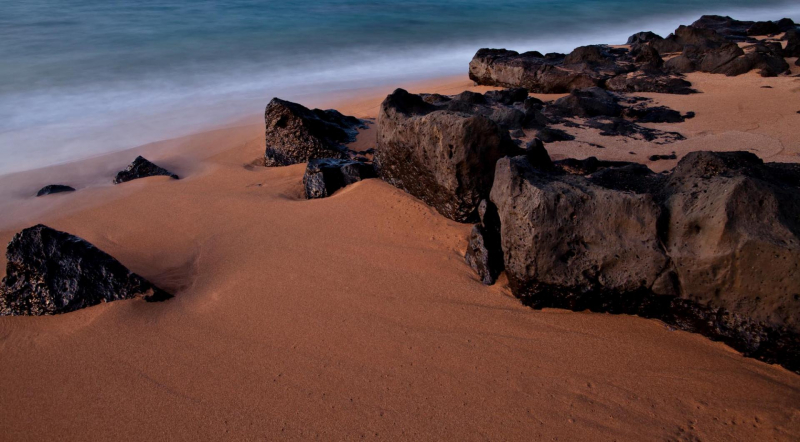
gohawaii.com 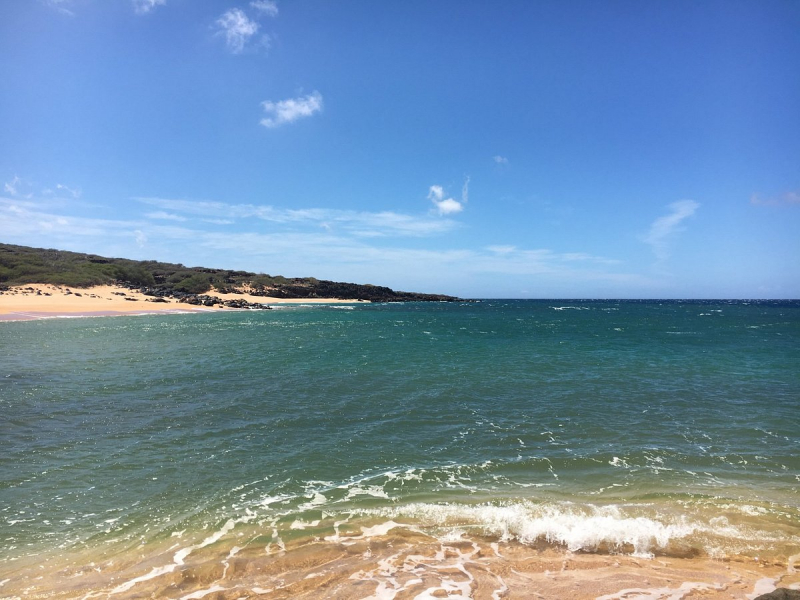
tripadvisor.com -
Hulopoe Beach is a popular destination in Lanai. The turquoise waves that are nailed to the shore and drowned in white sand are ideal for bodyboarding or surfing. You can sunbathe near the water or further away in the shade of palm trees. Sunbathers enjoy the wide expanse of sand, while snorkelers enjoy the vibrant reefs teeming with fish and native plant life. This is one of the few beaches on Lanai where swimming is safe, but only in the summer because the waves are too dangerous in the winter. If you're in Lanai during the winter, a visit to Hulopoe Bay is still worthwhile because you can sometimes see dolphins and humpback whales from the shore.
Because of the ebbs and flows, many natural basins formed along the eastern coast, where various fish, crustaceans, starfish, and other small organisms live. The same is true for larger living creatures found in the ocean. Approaching whales, dolphins, and turtles should not be disturbed, approached, or touched. Visitors are advised to look for sea stars and hermit crabs in the bay's eastern side tide pools and to picnic in the shady areas behind the beach. Visitors can also put on their hiking shoes and take a 15- to 20-minute walk along the cliffs just southeast of the tide pools to see Puu Pehe, also known as Sweetheart Rock.
Location: Lanai,Hawaii
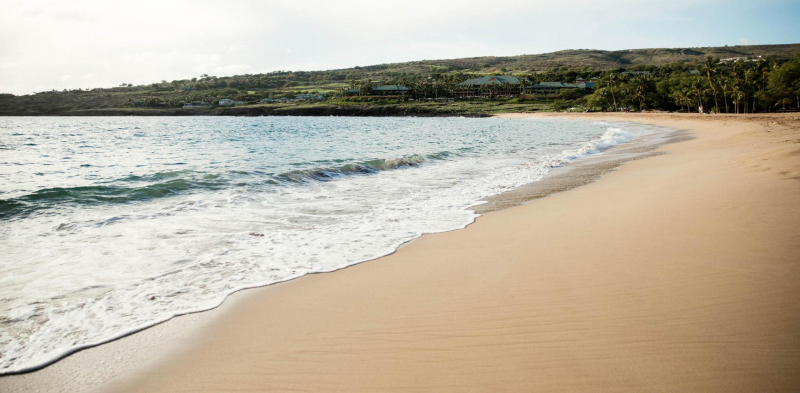
gohawaii.com 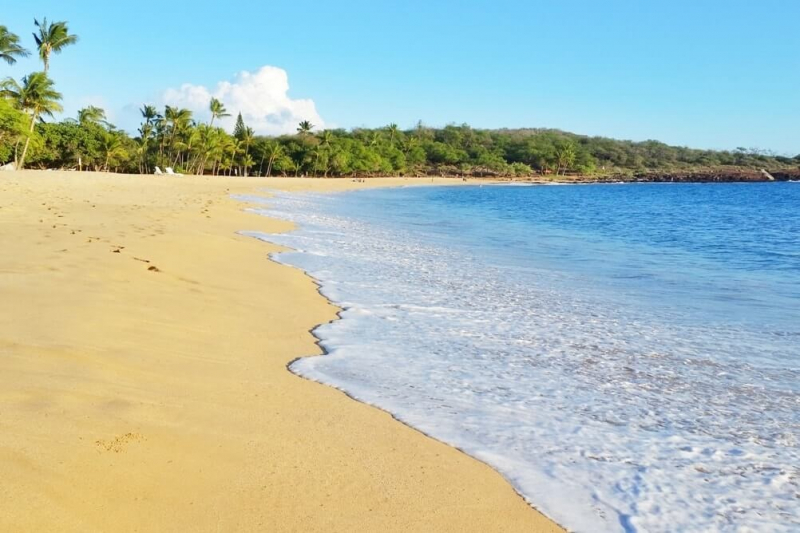
flashpackingamerica.com -
Waikiki Beach (also known as Waikiki) is a Honolulu suburb on the south shore of the island of Oahu in the United States state of Hawaii. Waikiki Beach is the most well-known of the district's six beaches, which also include Queen's Beach, Kuhio Beach, Gray's Beach, Fort DeRussy Beach, and Kahanamoku Beach. Waikiki Beach is virtually entirely artificial.
Waikiki Beach is well-known for its views of the Diamond Head tuff cone, its normally warm and cloudless weather, and its surf break. High-rises and resort hotels dominate the Waikiki skyline. Half of the beach is designated for surfers. The water is quite shallow for a long way into the ocean, with numerous rocks on the bottom. The waves can be rather strong, especially on windy days. The long rolling break of the wave makes it great for long boarding, tandem surfing, and beginners.
Waikiki features eight separate beaches, owing mostly to coastal development. They are Fort DeRussy Beach, Duke Kahanamoku Beach, Halekulani Beach, Royal Hawaiian Beach, Kūhiō Beach, Kapiʻolani Beach, Queens Beach, and Kaimana Beach. To rebuild Waikiki beaches, over 2,800,000 cubic feet (80,000 m3) of sand have been supplied since 1951. However, it is now thought that very little of the extra sand remains. From mid-September until late March, the sunset in the sea is visible from the beach. Ala Moana Beach Park, Hawaii's most popular beach, is near to but not formally part of Waikiki, and was similarly artificially constructed.
Location: Oahu, Hawaii
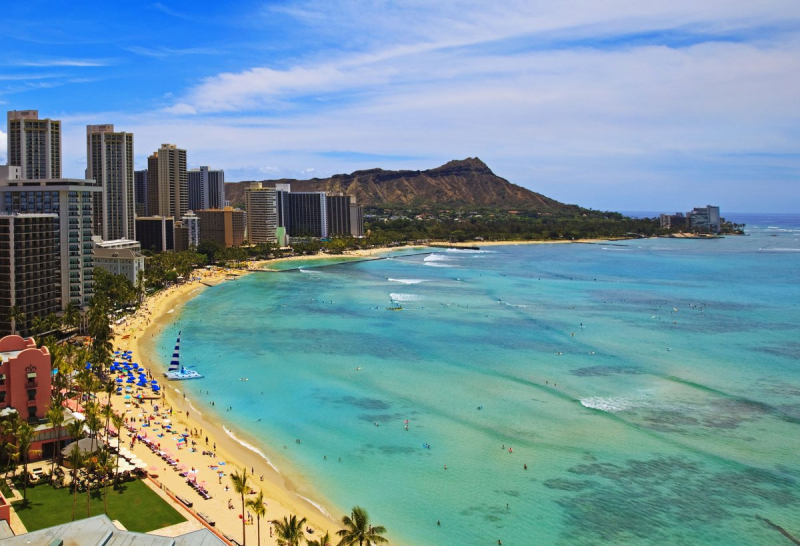
hawaii-guide.com 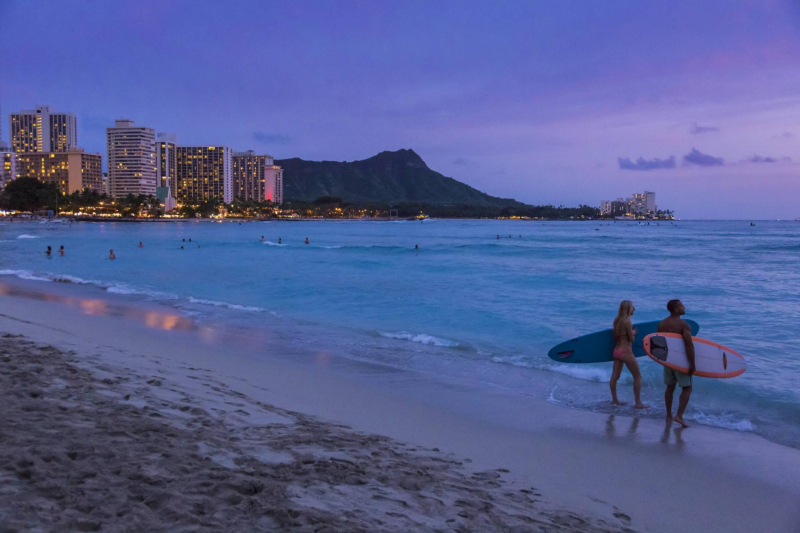
gohawaii.com -
Sunset Beach is located on Oahu's North Shore and is famous for big-wave surfing during the winter season. Paumalū is the native Hawaiian name for this location. It's a two-mile (3.3-kilometer) strip of predominantly beige sand at 59-104 Kamehameha Highway in Pupukea, 39 miles (63 kilometers) from Waikiki.
Sunset Beach, like many other beaches on Oahu's North Shore, is considered unsafe for new surfers due to massive coral formations near the surface, which pose a severe risk of catastrophic damage. The trade winds will be both a benefit and a hindrance, as the offshore breeze will make paddling for a wave tough. The swimming conditions vary based on the area and season. In general, the water is as flat as a lake in the summer and has waves in the winter. All surfing competitions take place in the winter, around December and January, when the waves are the biggest and best. Swimming conditions vary from location to location along the beach. Except during inclement weather, there is typically space to swim.
Travelers can spend the day at Sunset Beach, Hawaii's ultimate North Shore paradise, catching waves and watching sunsets. With wide-open spaces for playing in the sand, swimming, and snorkeling, visitors will find plenty to keep everyone's spirits high. The summer months are ideal for children to enjoy the sea since the waves are quiet. Winter, on the other hand, is ideal for surfing and surfing tournaments. There are other surrounding activities, such as a nocturnal Lua, hiking, golfing, and others. We can also go inside a few tidal pools to see some of nature's most brilliant beauties.
Location: Oahu, Hawaii

best-of-oahu.com 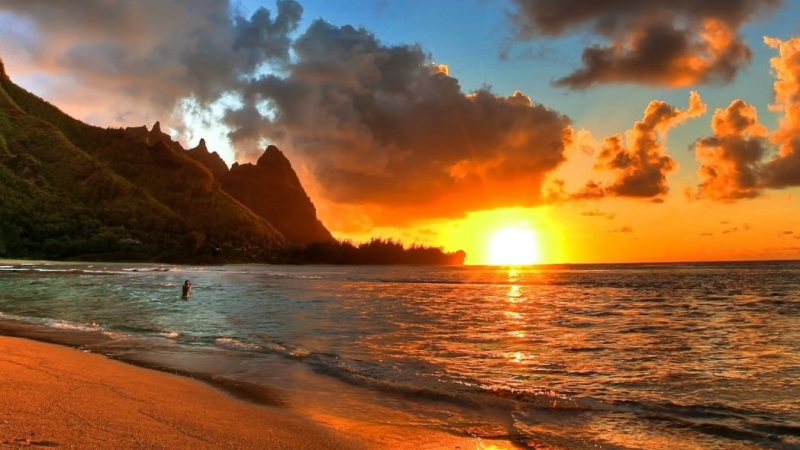
foundtheworld.com -
Lanikai Beach, also known as Kaʻōhao Beach, is located in Kahao, a neighborhood in the municipality of Kailua on Oahu's windward coast. Lanikai was named by entrepreneur Charles Frazier in the 1920s, who owned 300 acres of oceanfront property in the area known to Native Hawaiians as Kaʻōhao. This little half-mile stretch of beach is frequently rated as one of the best in the world. The neighborhood adjacent to Lanikai Beach is largely upper-class residential, and as such, it is only accessible via public beach access paths. The beach is public property, although it is not state land or a county beach park, as are many beaches in Hawaii.
The beach is less crowded on weekdays than on weekends, however, it is still difficult to obtain parking near one of the public beach accesses. The beach becomes quite crowded on weekends, and during holiday seasons such as winter and summer, the beach is almost totally packed every day. As one of the most beautiful beaches in Hawaii, Lanikai Beach is a popular location for photo shoots, as well-known models and photographers visit on good days. Kayakers frequently row out to land on the bigger northern island, but the southern island is a bird sanctuary and no one is permitted to approach there.
It features powdered clean white sand that is exceptionally soft. Lanikai Beach is consistently ranked one of the top beaches in America, and it is the only beach in the United States that has been voted one of the best beaches in the world. Lanikai is known for being a fantastic area to view the moon rise over the Mokuluas due to its location on the Windward or east side of the island, especially during the full moon. Throughout the year, the sun will rise exactly between the Na Mokulua islands on occasion.
Location: Oahu, Hawaii
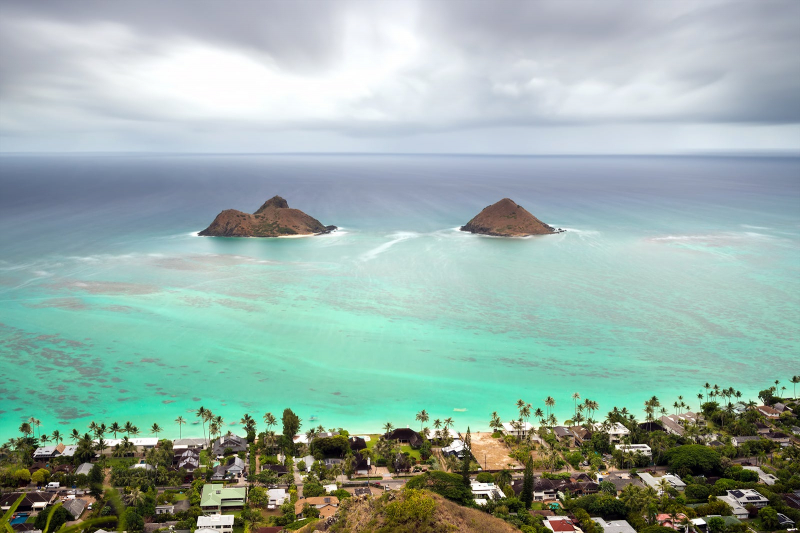
vi.hotels.com 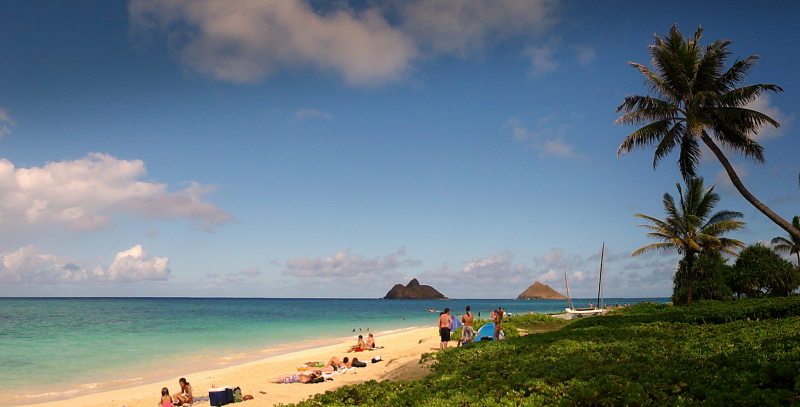
en.wikipedia.org -
Another quiet jewel of the northern shore lies five miles to the west, but we'll have to get there early because parking is limited. Tunnels Beach (Makua) is an excellent snorkeling and scuba diving location. Tunnels Beach gets its name from the many underwater caves formed by lava tubes that make the reef a wonderful underwater realm to explore. As a result, while the water is calm, which is normally in the summer, this huge beach offers excellent swimming and snorkeling, but it becomes rather harsh during the winter.
Tunnels Beach (Makua) is considered one of the most beautiful beaches in Hawaii. Palms and Ironwood trees line this crescent-shaped bay. The golden sand beach is framed by thick vegetation and mountains, making it a picture-perfect setting. When the winds build-up, this beach becomes a popular destination for surfers, wind, and kite surfers. The view, on the other hand, is spectacular all year, with towering mountains tumbling down to the lush tree-lined and golden sand seashore and crystal blue ocean abounding with fish, turtles, and, if you're lucky, a monk seal. When visiting this island, visitors must take in the beautiful sunset from this North Shore beach.
Location: Kauai, Hawaii
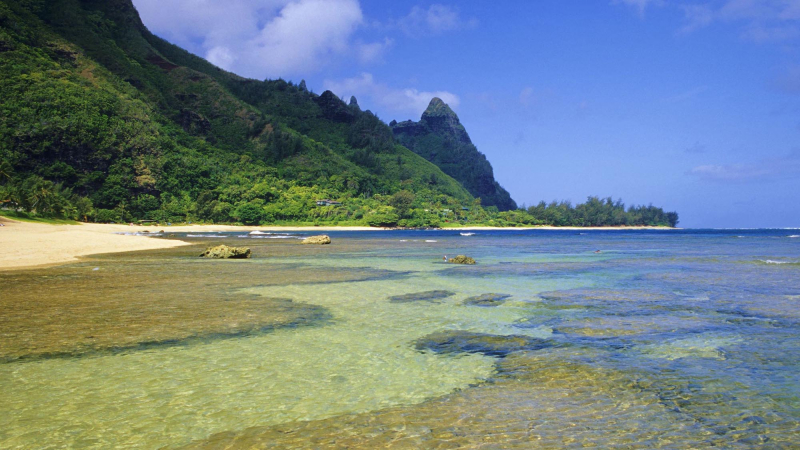
parrishkauai.com 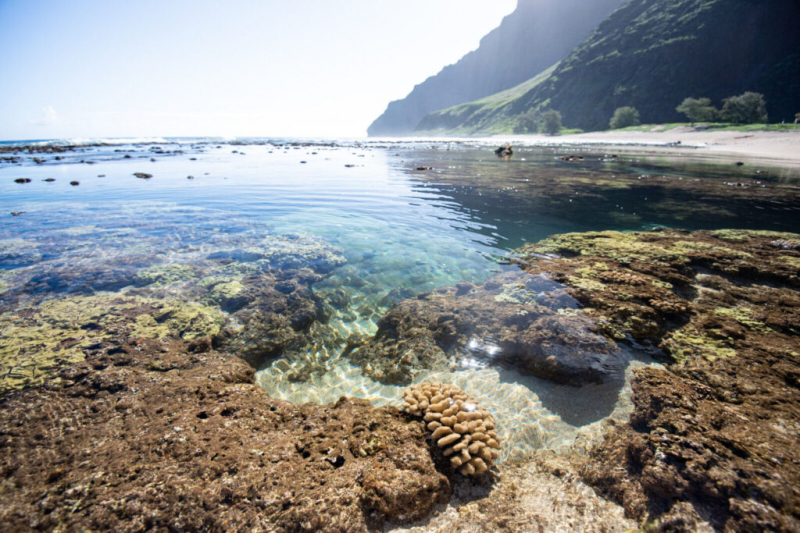
kauaicalls.com














